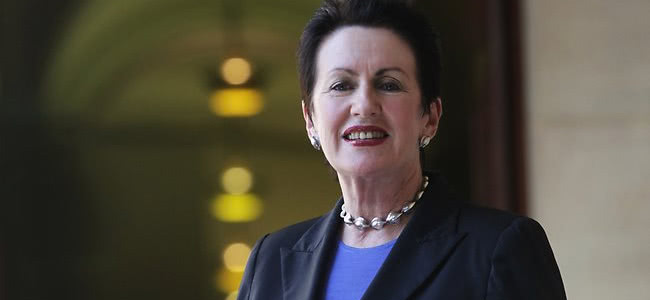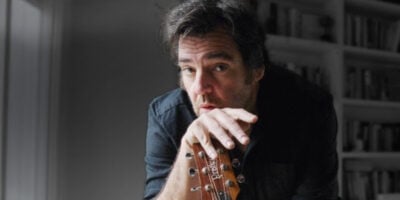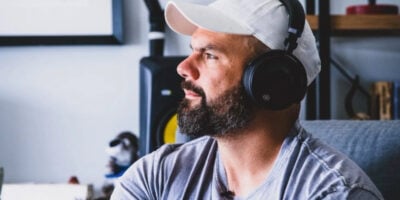No longer hidden in dinky garages, emerging artists could soon have soundproofed practice rooms within community centres, as just one of a host of new initiatives proposed in Sydney’s new Cultural Policy ‘Creative City’ heralded by Lord Mayor Clover Moore, designed to reinvigorate the NSW capital’s cultural landscape.
Following on from the recently unveiled National Cultural Policy, the discussion paper names music education and creative expression amongst innovative and visible advancements for the city as their main visions for the cultural sector, and are asking for contributions and submissions in the new policy: “This paper aims to start a conversation,” says Lord Mayor Moore, who encouraged feedback from Sydney residents on the direction of the policy.
Moore states that the council is “looking for opportunities and practical steps we can take to inspire a more creative Sydney,” noting that the discussion paper was about discovering “untapped opportunities within our grasp.”
In terms of the city’s current role in supporting Sydney’s cultural life, culture takes up 9.4% of the city’s total expenditure, with the creative industries contributing an estimated $8.2 billion to the city’s economy in 2012. It’s also estimated that this value will soar to $14.9 million by 2030, with the industry encompassing a wide variety of activities already, including architecture, visual and performing arts, publishing and media.
As well as new creative spaces for artists to practice, the policy also suggests that the city has a significant opportunity to support participatory creative practice in its music education, namely in investigating into a musical instrument ‘library’ within the City’s Library Network which could include microloans for purchase of musical instruments for city residents. “Live music and performance across all artforms face great challenges from the competition for the entertainment dollar and digital alternatives.” – John Wardle, live music activist
Noting that live music is a major contributor to Sydney’s cultural sector, the policy also points towards the recently launched Live Music and Live Performance Taskforce who will be tasked to “consider the impact of the current regulatory environment on live music”, while also “assisting individuals and organisations negotiate the regulations and procedures for filming or staging events in public spaces.”
The taskforce, who will present their own report to the City of Sydney in July, includes the recently appointed National Live Music Coordinator for Sounds Australia Dr Ianto Ware and musician and policy activist John Wardle among its ranks.
Quoted within the policy document, Wardle notes the difficulties facing the Sydney’s live music scene insofar as “live music and performance across all artforms face great challenges from the competition for the entertainment dollar and digital alternatives.”
“Removing barriers and promoting local culture are essential roles for local authorities to play for live music and performance to survive in contemporary urban environments,” Wardle stipulates.
As previously reported, Mayor Moore also spoke on record about the Live Music Taskforce, which is set to explore the issues of bureaucratic red tape and complaining residents that are hurting Sydney’s live music scene.
She stated that following the proposed Sydney Cultural Policy, the next stage is “consultation and the end result is taking a proposal to council” in regards to the Taskforce’s aim to finding real solutions to the live music turmoil currently facing embattled music venues, with the Annandale’s recent struggles being the most public of plights.
“Music is something that builds community, and I think government should play a very active role in that,” said the Lord Mayor. “There are a whole lot of reasons that we can put to government for supporting live music.” “Great cities’ reputations are built on their cultural lives and Sydney is no exception.” – Sydney Lord Mayor Clover Moore
“The issue that they love is how much the industry is worth,” she continues, “which always opens doors within government, [it’s] the $1.2 billion dollars contributed to the Australian economy, and live music is a third of that total.”
The discussion paper notes that recent research shows that NSW is now the largest contributor to the venue-based live music industry at 32% of the share, with Queensland and Victoria following suit with 24% and 22% respectively.
In terms of venue share, the Cultural Policy notes that Sydney is well-served for concert halls for the presentation of fine music, jazz, and world music, and also in its ability to house contemporary popular music and comedy venues, but is limited in its availability of “lyric theatres suitable for presentation of opera, ballet and other major events requiring large stage space.”
As a result, the council seeks to partner with the state government on a feasible study to find a site for a new 15000-seat Broadway-style theatre to support community demand.
Another option denoted within is a partnership with Sydney’s cultural venues to coordinate a program that ensures empty theatre seats are made available to high school students or target groups under-represented in usual attendance demographics. Residents could also see poetry scrawled on the side of garbage trucks in an effort to animate the city with interactive public art.
“Great cities’ reputations are built on their cultural lives and Sydney is no exception,” the Lord Mayor states in her opening message.
You can view the full Cultural Policy online here and make submissions on the new ‘Creative City’ policy from 26 March to 31 May 2013 via the City of Sydney’s official website, www.sydneyyoursay.com.au or facebook.com/cityofsydney
Submissions can also be emailed to [email protected]
or posted to:
Senior Manager Culture,
City of Sydney, Town Hall House,
456 Kent Street,
Sydney NSW 2000

































